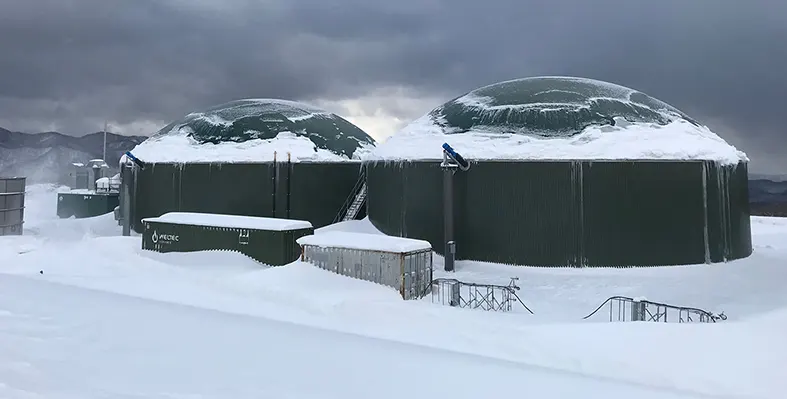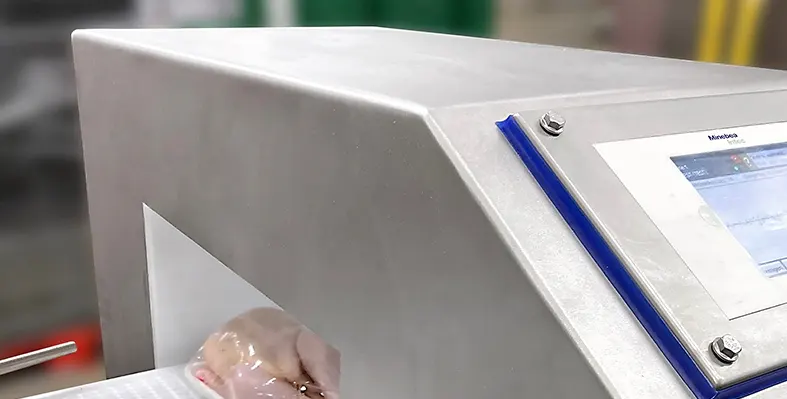
Thanks to WELTEC‘s customised design, biogas plants can also be operated in areas with high snowfall. (Image source: WELTEC)
Following the installation of several agricultural plants in recent years, WELTEC BIOPOWER has now reported an order for a 450 kW plant from the agricultural sector as well as a 250 kW biogas plant in Yamagata Prefecture, with an additional WELTEC BLUE WATER treatment, which is currently being implemented
Thanks to its many years of project experience in earthquake zones – in Japan and Greece – WELTEC BIOPOWER is able to adapt its technical solutions to seismically active areas in the shortest possible time using special structural engineering. Yamagata Prefecture has two digesters available to feed 80 tons of cattle manure per day. This is used to exclusively generate electricity and heat in the 250 kW plant.
WELTEC's scope of supply also includes two storage tanks, a pump container, a separation unit and the combined heat and power plant (CHP). In addition to the biogas project, a WELTEC BLUE WATER plant with a processing capacity of 50,000 tons of digestate (manure and wastewater from milk production) per year is currently being constructed. The treatment technology works by separating the digestate from the biogas plant in a multi-stage process into solid and liquid fertiliser and dischargeable water. The resulting solid phase offers a wide range of marketing options, which includes its use as fertiliser in the field or as bedding in stables. This enables the operator to make additional savings on transport costs by reducing the volume of the source material.
Output material distribution varies depending on the amount of dry matter present within the fermentation residue which comprises around 3% solid fertiliser, 29% nutrient concentrate and 68% water. Moreover, the sophisticated modular design of the industrial technology allows an ease in future expansion.
Everyday, operators of the plant fill it with 18 tons of cattle manure, along with food waste from nearby areas. The modular digester system from WELTEC makes it possible to individually adapt the diameter and height to meet customers‘ volume requirements or local building regulations, such as height restrictions. The fermentation residue from the 450 kW plant is processed in sewage treatment plants near the sites before being used as fertiliser. A further plant is currently being planned in Nagano Prefecture. The height of the digester is also adapted as a special solution to 5.03 m and equipped with a capacity of 450 kW. Another plant is currently being planned in Nagano Prefecture.
The WELTEC CONTROL software allows Japanese operators to get quick access to a number of important system parameters, with its intuitive user interface also simplifying feeding processes.







